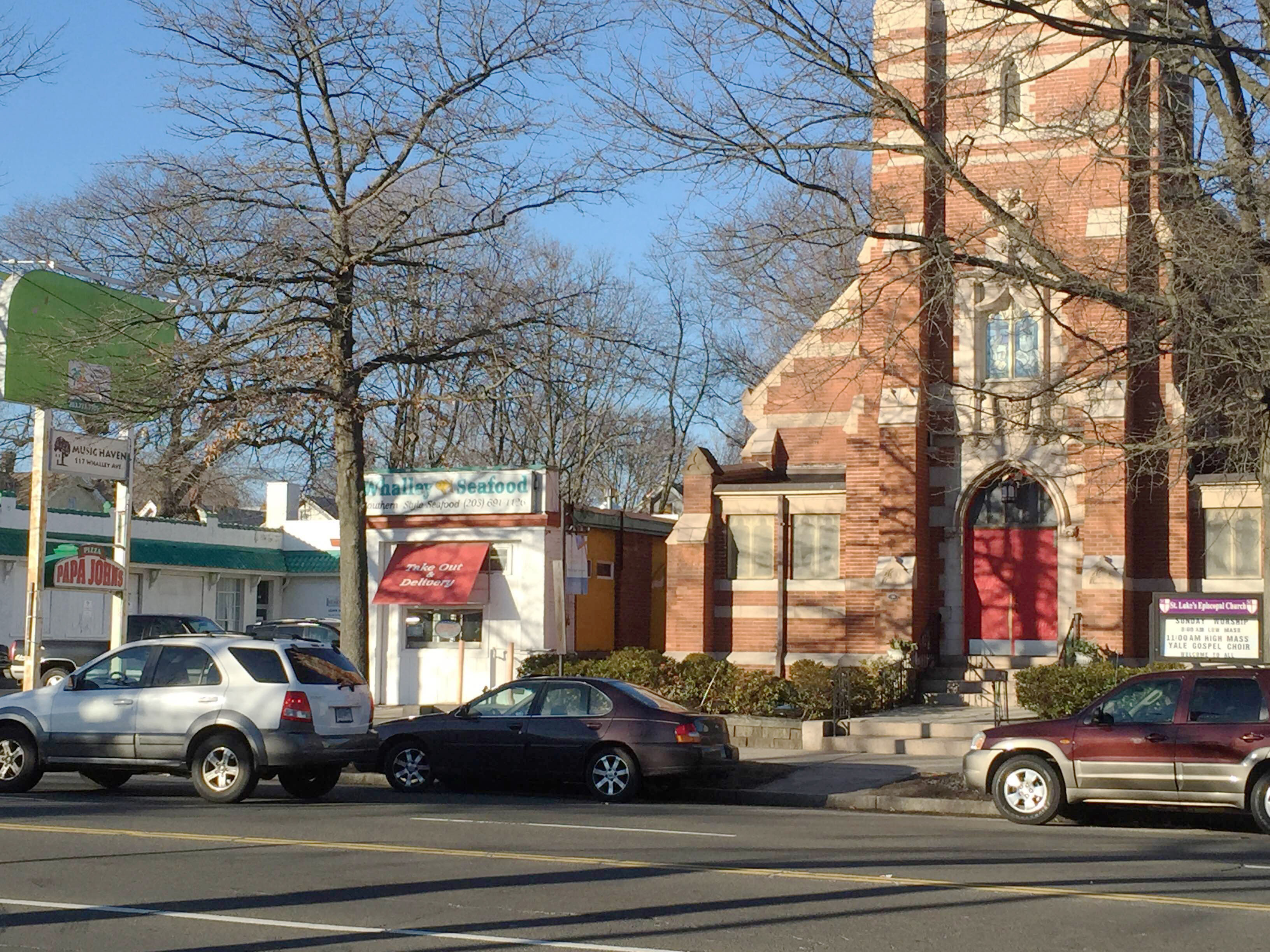
After receiving a $200,000 state grant last week, St. Luke’s Episcopal Church will move forward with plans to transform contaminated lots in the city into new stores and affordable housing.
Gov. Dannel Malloy announced the grant last week as part of an $8.7 million funding effort to rehabilitate 17 statewide brownfield sites, land contaminated by previous industrial use. St. Luke’s Development Corporation, the church’s nonprofit development arm, received the grant to assess the toxicity and cost of cleanup of four of the properties on its block — 10–12 Dickerman St., 117–125 and 129 Whalley Ave. and 34–36 Sperry St. — project consultant Cathy Petrachone said. After the assessment, which requires roughly three months, SLDC will begin construction of a 28-unit affordable housing complex on Dickerman Street and another complex with a commercial ground floor beneath 38 units of affordable housing for the adjacent Whalley Avenue and Sperry Street lots.
The state Department of Economic and Community Development, which distributes brownfield funding four times annually, chose SLDC’s project based on factors including SLDC’s readiness to proceed and the project’s potential return on investment, DECD Director of Communications Jim Watson said. The DECD distributed an additional 11 grants for project assessment and five for cleanup and redevelopment across Connecticut.
SLDC will submit applications for grants to the state for the bulk of its construction costs in June, Petrachone said. If funds are secured in the fall, construction will begin near the end of this year, with homes up for lease by the end of 2017 or early 2018.
“These sites right now are commercial property,” Petrachone said. “The buildings there are aged and have been reused for different purposes over the years. Part of the development is to demolish the existing buildings there and assess what might be contaminant on the property.”
The Sperry Street property currently houses a machine shop, whose owners rent the property from SLDC. The machine shop’s operation has led to ground contaminants that must be removed before new construction. A seafood restaurant, a parking lot and a Papa John’s occupy the lots on Whalley Avenue while the Dickerman Street property sits vacant.
For the project’s construction, which totals $13 million, city spokesman Laurence Grotheer said the Livable City Initiative has committed $100,000 to SLDC’s future construction. SLDC itself will pay $200,000 of total costs. SLDC will seek to get the bulk of its funding from state Department of Housing grants and the Connecticut Housing Finance Authority’s tax cuts, Petrachone added.
In a news release, Mayor Toni Harp praised the state grant for contributing to a greater supply of affordable housing in the city. Previous brownfield projects in the city have included renovations in Science Park, where there was industrial decay before the city targeted it for high-tech growth in 1981.
New Haven is home to about 35 brownfield sites.







